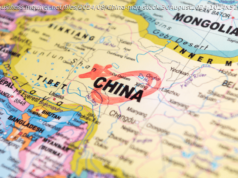Whatever you do: never bet against the Chinese central bank.
Whatever you do: never bet against the Chinese central bank.
China’s economy is growing. The International Monetary Fund expects 6.3% growth this year, right in Beijing’s wheelhouse of 6% to 6.5% GDP growth. The stock market is booming; the best of the big four emerging markets and better than the S&P 500. Shanghai and Shenzhen indexes are up over 35% year-to-date, despite the recent reversal. So why is the People’s Bank of China (PBOC) pumping money into the market like a drunken sailor?
Although it is hard to truly measure, it is safe to say that this year’s rally in the A-shares is thanks in large part to the central bank of China. It’s either due to its monetary policy easing, or it’s due to outright support of key equities, buying up shares in the market at an agreed-upon price, all in an effort to build a floor on the mainland China stock market.
Mainland China & Hong Kong stock markets opened weaker on Tuesday but turned higher as soon as China’s central bank conducted a reverse repurchase agreement injecting a sizable 40 billion yuan into the market. That’s around $6 billion in PBOC stock purchases.
A reverse repurchase agreement is the purchase of securities with the agreement to sell them at a higher price later on. For the party selling the security and agreeing to repurchase it in the future, the transaction is called a repurchase agreement or repo. For the party on the other end of the transaction — the investors buying the security and agreeing to sell it higher in the future — it is called a reverse repurchase agreement or reverse repo.
There are also rumors of another bank reserve requirement ratio cut which would increase lending to private companies, even though lending is already on the rise, per Premier Li Keqiang’s orders during the Two Sessions meeting of the Communist Party the first week of March. Keqiang told state banks to lend more to small and mid-sized businesses.
See: China’s Stock Market Getting Tired — Forbes
There has been some debate that Beijing’s loose fiscal and monetary policies will be cut back thanks to strong economic data. But now comes this surprise move by the PBOC to give its market some legs.
Early Tuesday morning, both the MSCI China and the CSI-300 Index are down 1.6% and 2.3% respectively at the opening bell.
U. S. investors woke up behind the eight ball on this one. If it’s unwise to bet against the Fed, it’s just as unwise to short China’s just-as-powerful central bank. It took all but an hour before the market here caught wind of the moves in Hong Kong and Shanghai and quickly reversed course, sending the bigger China ETFs into positive territory.
On Monday, the PBOC came out with their briefing of the first quarter monetary policy committee (MPC) meeting held on April 12. Compared to the previous meeting, the MPC has become slightly more sanguine on growth but sounded a cautious tone on policy easing, mentioning the “curbing of financial risks while stabilizing growth” and added back the line about “keeping money supply under control” after dropping it from their last meeting minutes.
„The economy has yet to fully recover,“ says Ting Lu, the chief China economist for Nomura Securities in Hong Kong. „The credit easing cycle is shorter and smaller than before and the incoming growth recovery should also be shorter and smaller than previous recoveries.“
The PBOC is right to be a bit more optimistic about the growth recovery, but growth has not fully recovered and Beijing still needs to acknowledge the strong headwinds ahead, Lu wrote in a report to clients Tuesday morning.






